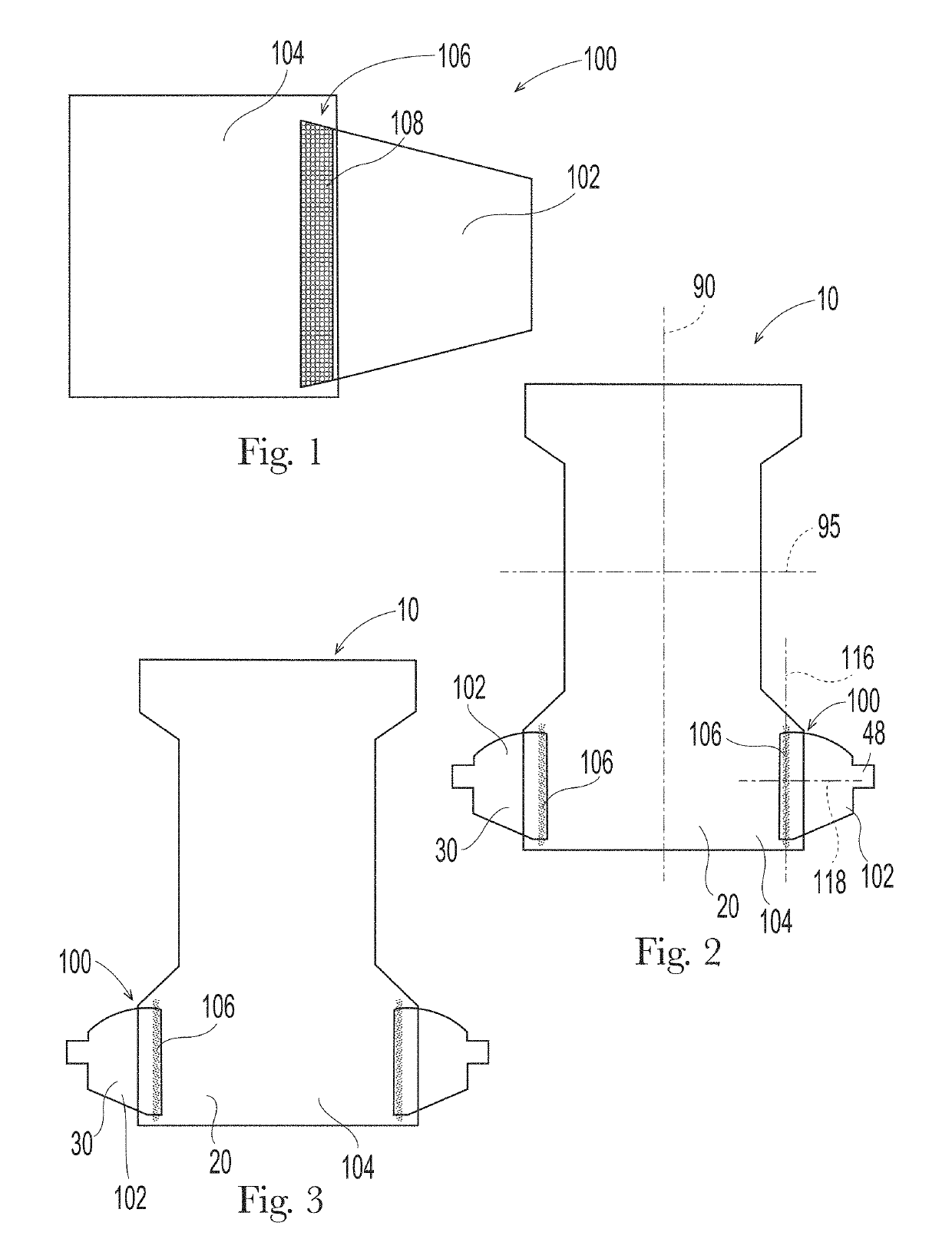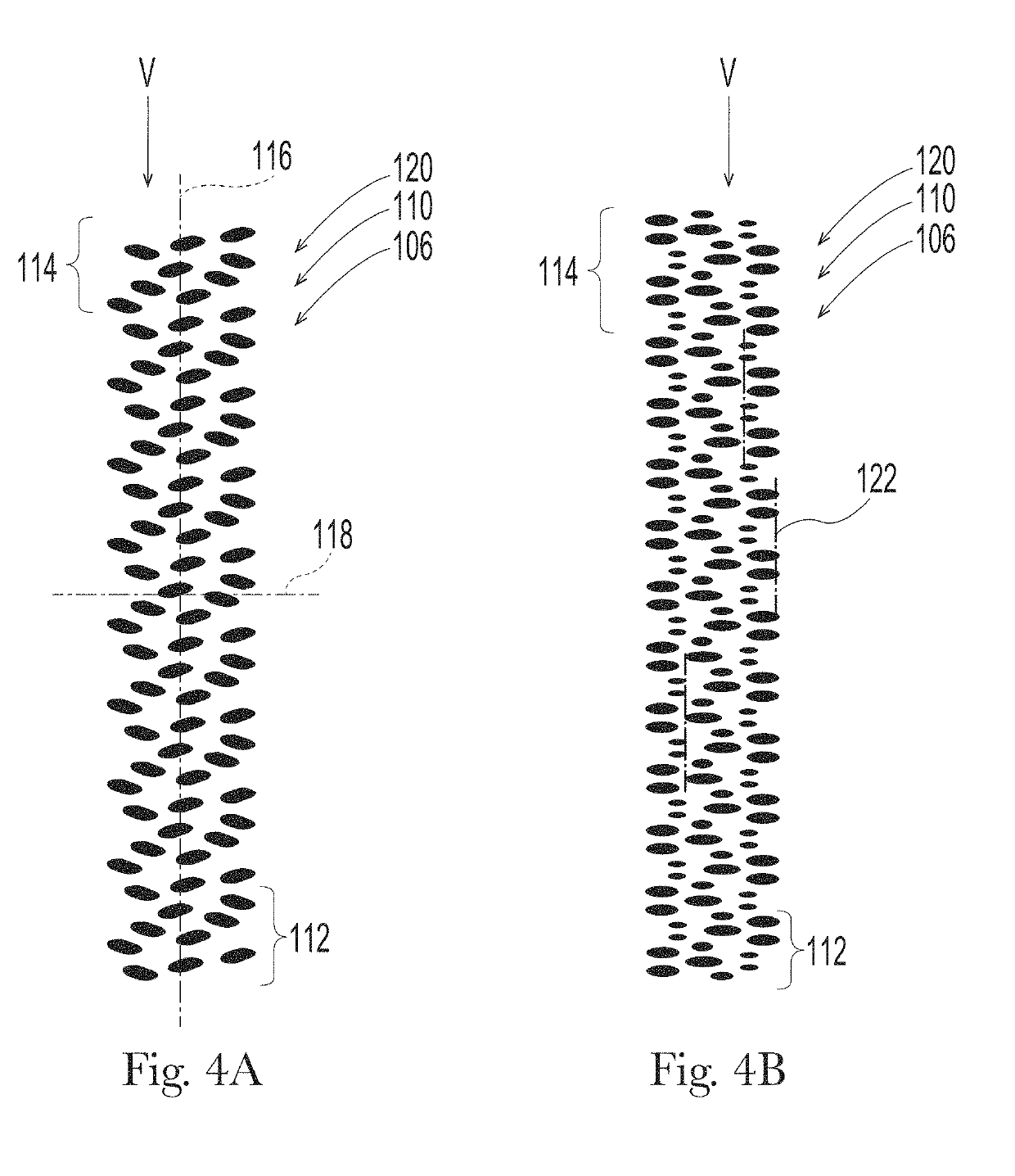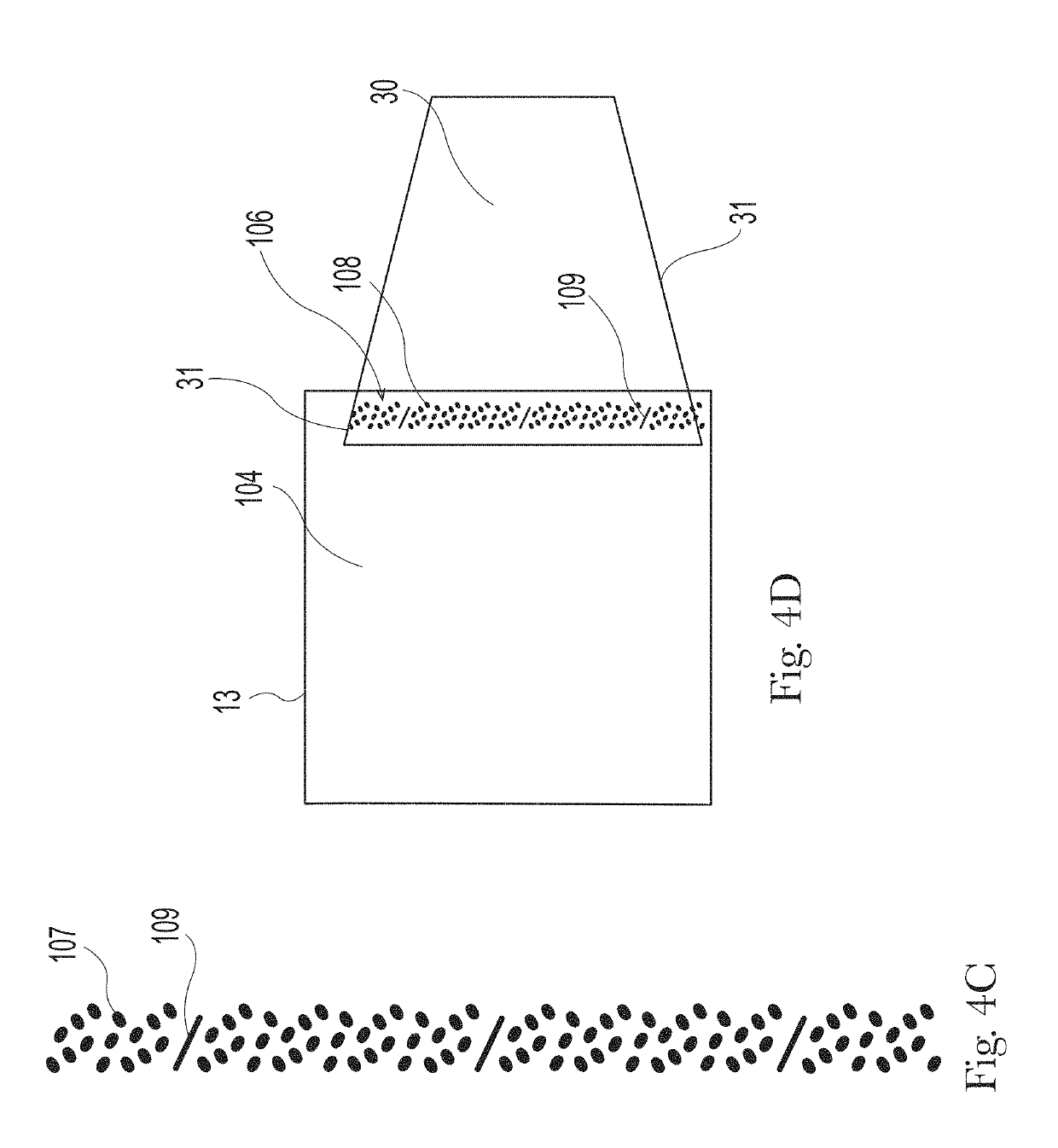Bond pattern
a technology of mechanical bonding and bonding pattern, applied in the field of mechanical bonding composites, can solve the problems of fracture at the bonding location, limited amount of glue that can be added to the bonding region, and known bonding pattern not designed to sustain high stress from multiple directions
- Summary
- Abstract
- Description
- Claims
- Application Information
AI Technical Summary
Benefits of technology
Problems solved by technology
Method used
Image
Examples
examples
[0053]The following composite examples demonstrate properties of the invention herein.
[0054]The Comparative Example A comprises an initial set of substrates. The initial exemplary set includes a first substrate that is a ring-rolled activated laminate having an elastic film sandwiched between two nonwovens, where one nonwoven comprises a spunbond web and the other nonwoven comprises a carded web. The laminate layers are joined by adhesive. The laminate is commercially available from Clopay, USA under the trade name ELASTIPRO™ 8004. The laminate is bonded to the second substrate in an inelastic region. The second substrate is a cuff-backsheet laminate comprising a 19 gsm polypropylene spunbond nonwoven material, commercially available from Avgol, USA under tradename AVMN1071984001, a 15 gsm polymeric film, commercially available from Clopay, USA under tradename CLNT0045465363, and a 12 gsm SMS polypropylene nonwoven material commercially available from Berry Global under tradename PG...
PUM
| Property | Measurement | Unit |
|---|---|---|
| Peel Strength | aaaaa | aaaaa |
| Lateral Peak Peel Strength | aaaaa | aaaaa |
| pressure | aaaaa | aaaaa |
Abstract
Description
Claims
Application Information
 Login to View More
Login to View More - R&D
- Intellectual Property
- Life Sciences
- Materials
- Tech Scout
- Unparalleled Data Quality
- Higher Quality Content
- 60% Fewer Hallucinations
Browse by: Latest US Patents, China's latest patents, Technical Efficacy Thesaurus, Application Domain, Technology Topic, Popular Technical Reports.
© 2025 PatSnap. All rights reserved.Legal|Privacy policy|Modern Slavery Act Transparency Statement|Sitemap|About US| Contact US: help@patsnap.com



